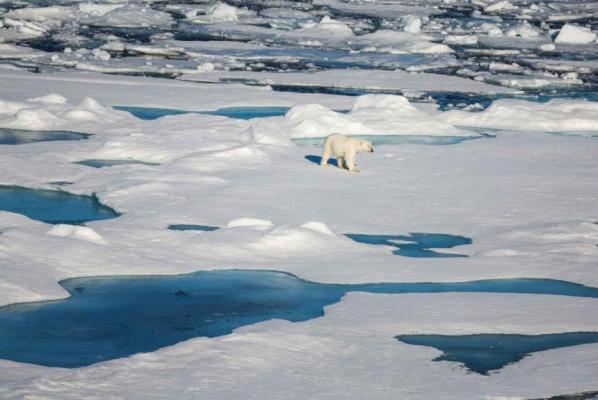
Sept. 16 (UPI) — Arctic sea ice shrank to roughly 4.7 million square kilometers in September, making the sea ice extent in 2017 far below numbers from 1979 to 2006.
Scientists from the Alfred Wegener Institute, the University of Bremen and Universitat Hamburg reported Friday that the minimum sea ice extent for 2017 is average for the past 10 years, despite being far below average from previous decades.
The sea ice in the Arctic is considered a critical element in climate processes and a vital early-warning system for global warming. Researches point to the September minimum extent as an important indicator of climate change.
Sea ice covered area is measured using high-resolution microwave satellites, with data provided by the University of Bremen and Universitat Hamburg.
According to researchers, the amount of ice loss is massive even though the current extent of sea ice does not represent a new record low.
“This year’s sea ice extent is again on a very low level: the observed September value of the past eleven years has consistently been lower than in any of the previous years,” Marcel Nicolaus, a sea ice physicist from the Alfred Wegener Institute, Helmholtz Center for Polar and Marine Research, said in a press release.
The waters in the Arctic remained unusually warm this past winter, and scientists found that sea ice coverage in March was lower than in any March before.
“Thanks to the relatively cold summer, the sea ice managed to bounce back somewhat, but this year’s September minimum is by no means a good sign,” said Lars Kaleschke, a researcher at Universität Hamburg’s Center for Earth System Research and Sustainability. “Though the amount of sea ice is of course subject to natural fluctuations, the long-term decline is obvious.”
The spatial distribution of sea-ice differed this year from the patterns in recent years, and from the long-term pattern, with less ice recorded in the Chukchi and East Siberian Seas than in 2016. Conversely, more ice was found north of Svalbard and in the Beaufort Sea.
“Despite the warm winter, the sea ice wasn’t unusually thin,” Nicholaus said. “Our explanation is that the small and thin ice coverage from the previous summer — the second-smallest area ever recorded — grew faster and thicker than in other years, since thin ice grows faster than thick ice.”
After a significant increase, the researchers say the exact date and value of the minimum sea ice extent in 2017 can’t be determined for several weeks, and that the monthly mean for September can’t be determined until October.



